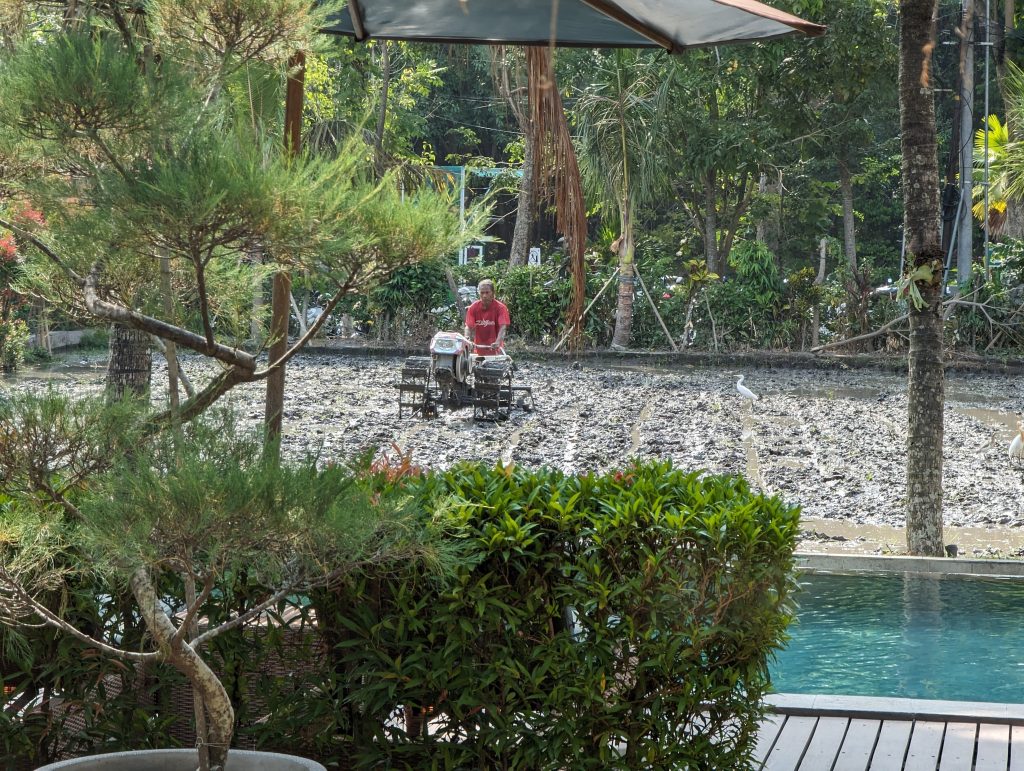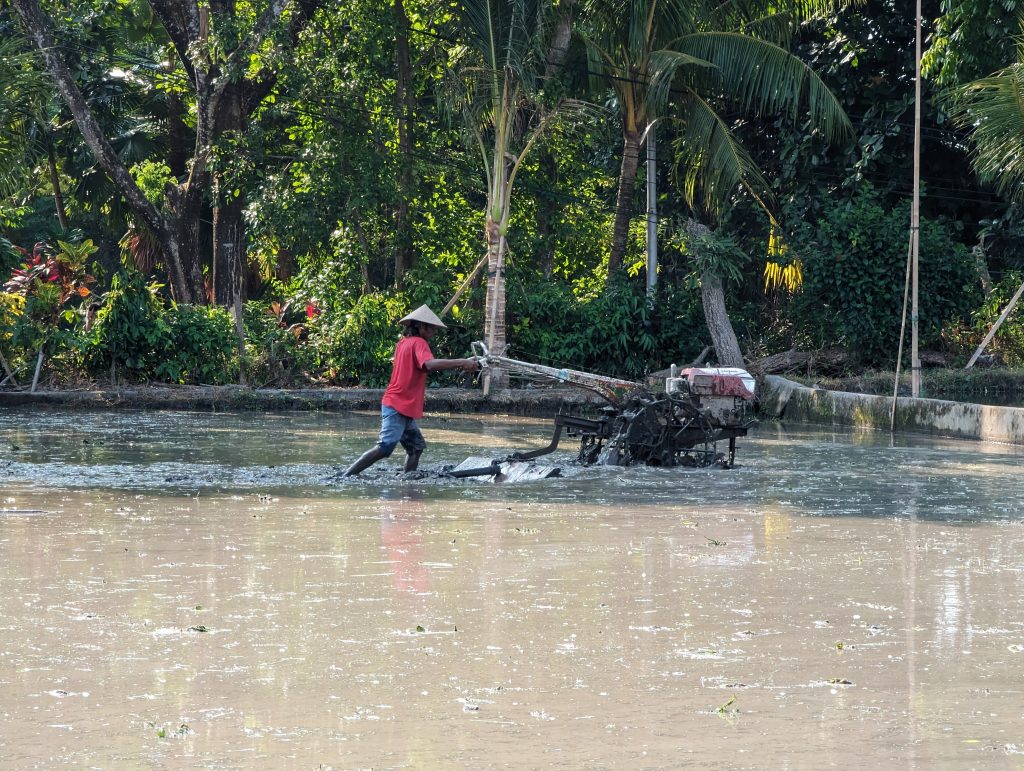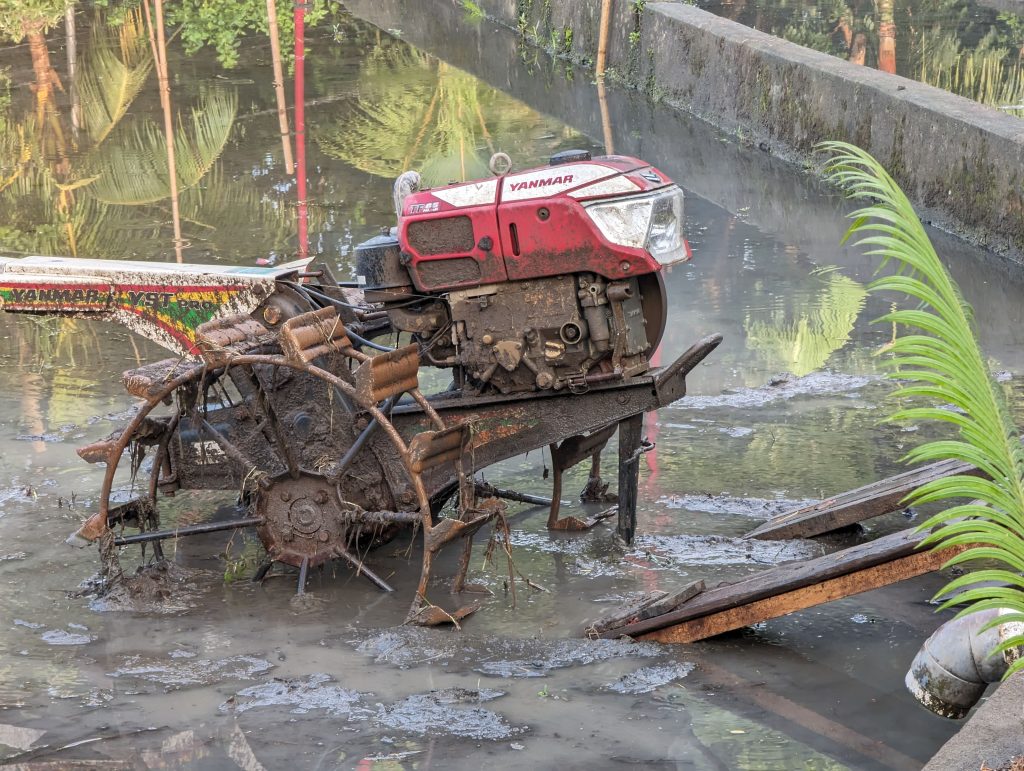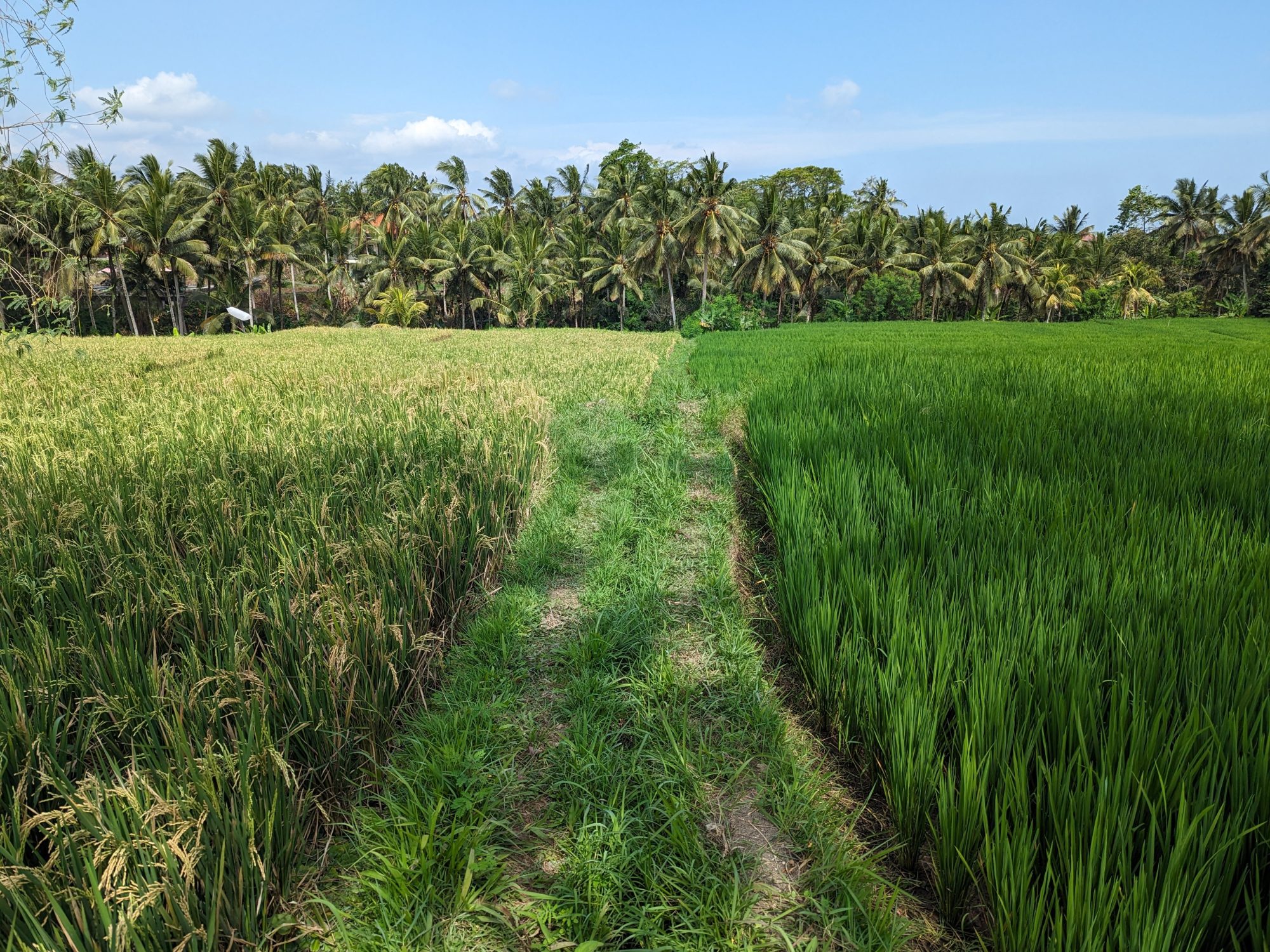Bali is well known for its rice fields. Generally, they are quite picturesque, and I had this in mind when I booked our hotel in Ubud. The hotel has a rice field located only a couple of metres from the pool. The advertising images showed the hotel overlooking a lush green rice field.
However, when we arrived at the hotel, the rice field was in the process of being turned over with a rotary hoe attached to a hand tractor. This gave us some fantastic opportunities to witness the field preparation and rice planting process, but it did also mean that the green rice field view was non-existent while we were at the hotel, and that we did have to contend with a large, mildly smelly, and muddy puddle a few steps from our room and the pool.
Thankfully, there are plenty of other rice fields around, so we saw a lot of rice regardless, in various stages of growth. The entire process (from planting to harvesting) only takes three to four months. The image at the top of this post shows rice near to harvesting (on the left) and midway through growing (on the right).
Following the turning over of the soil that we saw when we arrived, the following day the field was smoothed using a large blade attachment. To accomplish this, the field was flooded to saturate the soil and make it very soft. We noticed that the water level in the field varied considerably, and appeared to be actively managed by alternately blocking and unblocking the pipes and channels that connected the field to the adjacent main water supply channel. Sometimes this was accomplished by building small mud dams around the field outlet, not too dissimilar to the dams we built in puddles as kids.
I had a few limited discussions with the farmer (he didn’t speak English). On Tuesday, he told me that planting would be on Friday, so we made sure we paid attention to the field then and watched some of the planting take place. The planting took place using seedlings and was done entirely by hand. A single string line was placed through the middle of the field, and the first six rows of rice were planted following this string line. All following rows were the aligned with these rows.
Planting of the main field and the two adjacent smaller fields took the entire day. However, the work did seem to be taking place at a fairly relaxed pace, with plenty of breaks.
It was also fascinating to watch what happened with the hand tractor. Prior to planting, it was driven out of the field by placing a wooden ramp under each wheel. Then, on Saturday morning, I saw the farmer (Nyoman was his name) preparing to drive the tractor away. I had been curious how they would move the tractor, since the other fields that Nyoman managed were three kilometres away. It turned out that he was just going to drive the tractor along the road and through the Monkey Forest parking and onwards to his fields. Quite the accomplishment since it seemed to be incapable of anything faster than walking pace and was run much slower on paved surfaces.
It’s a pity that we weren’t able to hang around for a few months to observe the entire life cycle of the rice, but we probably saw the most interesting parts of it, apart from the harvesting of the rice itself.







